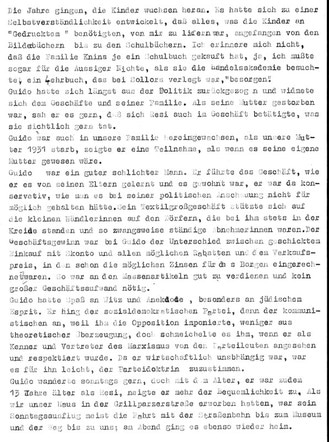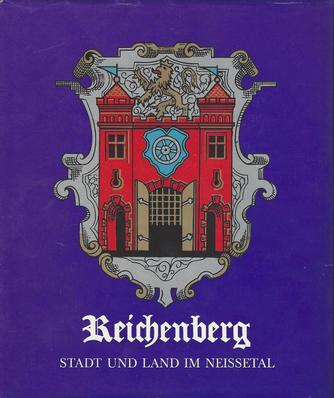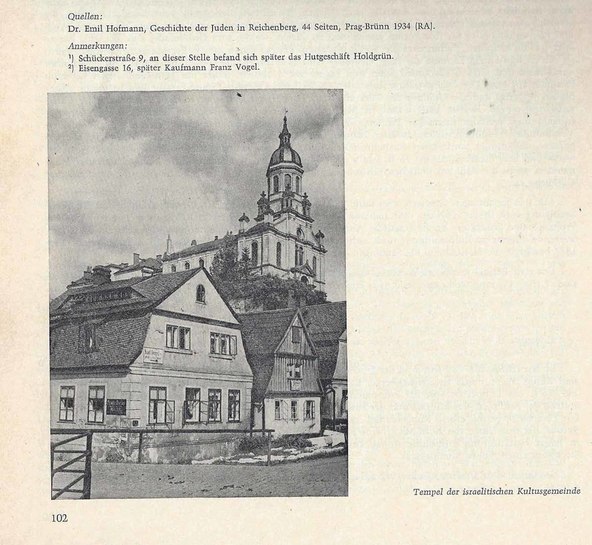|
In this month’s blog, I am doing things a little bit differently than I normally do. More specifically, I am sharing with you the guest blog of a good friend of mine, Annette Gendler, who just published her first book, Jumping Over Shadows: A Memoir, which I highly recommend you all read. Without giving away too much about the book’s plot, let’s just say that it revolves heavily around Annette’s genealogical journey and quest for answers about her family’s past in pre-World War II and wartime Czechoslovakia. The work also pertains to questions about identity – and more to the point – about Jewish identity. These are all topics that I have discussed in one form or another in my own past blog articles (see, for instance, my January 2017 blog), as featured in “Forays into Yiddish.” I invite my readers to please take the time to read Annette’s most engaging and well-researched article about her family history in the following blog. Please also feel free to share your own thoughts and comments at the end of this fascinating piece. I always knew that my German great-aunt had been married to a Jewish man in Czechoslovakia before World War II because that marriage had put the extended non-Jewish family, particularly my grandparents, in danger once the Nazis took over their hometown of Reichenberg (now called Liberec). The city turned into a veritable Hexenkessel (witches’ pot) when it was declared “Gauhauptstadt,” i.e. capital of the German Reich’s new region, the Sudetenland, after that area was ceded to the German Reich following the infamous Munich Agreement of September 1938. It wasn’t until my great-aunt’s story resonated in my own life that I began to wonder about this family story when I, living in post-WWII Germany, fell in love with and married a Jewish man. And later, when I decided that this impossible love between a German woman and a Jewish man happening twice in my family would make a good story, I had to try to put it together. What had really happened to my Jewish great-uncle? And what happened to their marriage when the Nuremberg Laws, prohibiting marriages between “Aryans” and “non-Aryans” took effect? Growing up, I was close to the daughter of this marriage, my dad’s first cousin Herta, who told me many family stories. So did my grandmother, who was a gifted storyteller. Nevertheless, being aware of family stories is one thing, being able to retell them and fit them into a historical timeframe is another. For example, when I traveled to Reichenberg for the first time in 2002 and called Herta from a stunningly beautiful café there, she said: “Oh yes, that must be the Café Post. You know, my father loved to go there. He went there every Sunday morning. Met with friends. My mother didn’t quite like this, but that was his habit. Until of course he couldn’t go anymore. But that’s how things were then.” “That’s how things were then”—by this she meant that a man like her father, Guido Knina, who had been part of the bourgeois coffee house culture, couldn’t go to the Café Post anymore after Reichenberg had fallen under Nazi rule because he was a Jew. Under the laws of the German Reich, Jews were banned from public places like cafés. When I later visited Herta in the nursing home, she mentioned, “I always wanted to go to university; I would have loved that. But in those days it wasn’t possible, so what could I do?” Characteristically, she did not mention that in the 1940s, in a Czechoslovakia annexed by Nazi Germany, she was not able to study because, classified as a half-Jew, she was barred from institutions of higher education. Only when I read my grandfather’s memoirs, typed on now yellowed onion skin paper, did I find out that my grandfather had, in fact, arranged for her to be able to get a degree from the Handelsakademie (Academy of Commerce) even though technically she was barred from that, too. But the principal was a cousin of my grandmother, and he agreed to let Herta attend unregistered.  Page from my grandfather’s memoirs that also appears as front matter in "Jumping Over Shadows." Page from my grandfather’s memoirs that also appears as front matter in "Jumping Over Shadows." Those were the intersections of Jewish and non-Jewish life that interested my grandfather, and that he duly recorded in his memoirs because they affected him. I based a lot of my reconstruction of my great-aunt’s story on my grandfather’s memoirs, and specifically a chapter he titled “My Sister.” Very quickly, however, I realized that I needed to fill in the blanks if I wanted to contrast my story of falling in love with a Jewish man with my great-aunt’s. Who had he been? Who had his family been before they became connected with my family? In order to round out the story of this Jewish side of the family, I needed to know more about the Jewish community of Reichenberg. My first find, on the German eBay site, was this book on Reichenberg, published in Augsburg in 1974. I’m fortunate that I am fluent in German, and that my sister, who still lives in Germany, was willing to purchase the book for me. In it, I found several passages that corroborated other parts of my grandfather’s narrative, but it also included a chapter on “Die israelitische Kultusgemeinde in Reichenberg” (the Israelite Cultural Community in Reichenberg). Side note: To this day, Jewish communities in Germany, Austria and Switzerland are called “Israelite,” not “Jewish.” I have often had the impression that the word “Jude” (Jew) is hard to utter for Germans.  Book about the city of Reichenberg published in Augsburg, Germany in 1974. Book about the city of Reichenberg published in Augsburg, Germany in 1974. In seven paragraphs, this book summarizes the history of the Jewish community in Reichenberg. It was the usual sordid tale of rights granted and rescinded, coupled with various harassments, until Jews were given full citizenship by Austro-Hungarian Emperor Franz Josef in 1860, and 30 Jewish families took up permanent residence in Reichenberg. At the time, Reichenberg was a well-to-do center for textile and glass manufacturing and trade. However, these seven paragraphs didn’t give me any specific information on the family I was looking for. The chapter also featured this image of the “temple of the Israelite community.” Most importantly, for my research, it cited its source, an article written by Dr. Emil Hofmann, “Geschichte der Juden in Reichenberg,” published in 1934 (see above the picture where it says “Quellen:” – “Quelle” means source.) I was able to find this article, The History of the Jews in Reichenberg, in translation, on Jewishgen.org as part of a collection of articles titled The Jews and Jewish Communities of Bohemia in the Past and Present, edited by Hugo Gold and also published in 1934. Here I struck gold: “J.L. Knina” was listed as a member of the temple’s building committee. “J.L. Knina” was Joachim Ludwig Knina, father of my great-uncle Guido Knina. Further on, in a chapter titled “Jews in Non-Jewish Organizations,” I found Guido himself: From my grandfather’s memoirs I knew that he and Guido had served as city councilmen together. However, I did not know that Guido had been the first Jew elected to the city council. This is the kind of information that would be noteworthy to a Jewish audience but not to my grandfather. In addition, my grandfather was loath to label people—another reason, perhaps, why he makes no mention of this. This is where research is needed to fill in the blanks and find the information that is neither part of family lore nor contained in family documents. Ordering books, viewing them online, or borrowing volumes on Czech history from the library was, however, not enough. I had to hit the archives. On one of my trips to Reichenberg, in 2009, I went to the public library there, and asked whether they had newspapers from 1938. I thought if I could read reports from that time, I would be able to recreate what life had been like back then. The archivist shook her head and told me that it was unlikely they would have anything because there had been a fire at some point (Now the library is housed in a shiny new glass and steel building.). But she did put in a request and told me to return in two hours. When I got back, she gesticulated that they did have something, and after surrendering my American passport as a guarantee, she handed me a huge ledger of yellowed newspapers from 1938. Actual, physical newspapers! Thankfully, I can read the old Gothic-style German print; as a kid, growing up in Germany, I had been determined to read one of my favorite books, my grandmother’s volume of the saga of Rübezahl, a red-headed giant who lived in the forested mountains surrounding Reichenberg. Even though I knew that from September 1938 on, Die Zeit, Reichenberg’s city newspaper, had been a Nazi organ, it was still a fascinating read. The November 11, 1938 edition gleefully described the destruction of Reichenberg’s synagogue during Kristallnacht: Note here the particularly chilling subtitle: “Only the walls are left standing—the population protests the Jewish murderous attack” referring to the pretext for the pogrom of Kristallnacht, the assassination of German diplomat Ernst vom Rath by Herschel Grynszpan, a 17-year-old Polish Jew, in Paris on November 7, 1938. As far as I know, Guido never found out that the synagogue his father helped build went up in flames. He was already in a sanatorium, suffering from diabetes, and in and out of consciousness. My grandmother spent that day at his bedside. By that time, he and my great-aunt were divorced, presumably so she, the “Aryan,” could take over his textile business, save the family’s livelihood and ferry her half-Jewish children through the Nazi inferno. Most of Reichenberg’s Jews perished in concentration camps. I know of only one of Guido’s cousins, who made it to Palestine. My grandmother corresponded with her, and my husband and I visited her in Haifa on our first visit to Israel together in 1986. In 2012 (my manuscript was already finished), another book on the history of the Jews of Reichenberg was published: Reichenberg und seine jüdischen Bürger by Isa Engelmann, Berlin, 2012. It confirms the family story that Guido’s wife, my great-aunt Theresia (called Resi by my family), took over the business Joachim Ludwig Knina had founded in 1878 and that his son Guido had run until 1938: In order to keep up appearances, Resi had no contact with Guido after the divorce. Instead, my grandparents took care of him. They bribed the staff so he could stay in the sanatorium (Jews were barred from all kinds of institutions by then) and when he passed away in December 1938, they arranged for his funeral. Many years later, his son Ludwig, the only relative to remain in Reichenberg all his life, had my family’s and Guido’s grave put together because, after the war, German graves were regularly vandalized. Now the family gravestone only reads “Rodina Kninova” (Family Knina); unless you request to see the register for this particular grave, you would never know that my family members with the last name Berndt are also buried there:  Again, one piece of evidence, namely the grave, tells only part of the story. The associated document, if you do ask for it, tells another part of the story, namely that in fact more than just “Rodina Kninova” are buried there. But even that is only part of the story. Nowhere, except in my family’s oral history, will you find that Guido, buried here, was Jewish. It all needs to come together—artifacts, documents and lore—to round out the picture. And even then, I am not convinced it is the whole story. What remains of a life, of all lives, are always fragments. Once a subsequent generation finds these fragments, it depends on them, on how they piece them together, what story might be told of the past in the future. I, for one, stumbled upon one stunning fragment that could explain another tragic family story. For that tale, however, you will have to read Jumping Over Shadows.  Annette Gendler is the author of Jumping Over Shadows, the memoir of a German-Jewish love that overcame the burdens of the past. Her writing and photography have appeared in the Wall Street Journal, Tablet Magazine, The Forward, Kveller, Bella Grace and Artful Blogging, among others. She served as the 2014–2015 writer-in-residence at the Hemingway Birthplace Home in Oak Park, Illinois, and has been teaching memoir writing at StoryStudio Chicago since 2006. Born in New Jersey, she grew up in Munich, Germany, and lives in Chicago with her husband and three children.
16 Comments
Anna Shapiro
5/21/2017 10:24:43 am
Rivka,
Reply
5/21/2017 11:23:15 am
Anna,
Reply
Edye Garner
5/21/2017 12:24:41 pm
I ordered the book. Thank you for bringing it to my attention.
Reply
5/21/2017 02:39:03 pm
Thank you so much for your interest and for buying my book!
Reply
Rivka Schiller
5/21/2017 12:32:36 pm
Thanks so much, Edye, for your remarks! I'm glad I was able to inform you of Annette's book by hosting her wonderful article on my blog site. I am curious to hear what you think of her book. I hope you enjoy reading it and I'm sure that Annette feels precisely the same way as I do.
Reply
Roberta
5/21/2017 01:25:17 pm
Buying books is a luxury for me Rivka, but this one I'm going to buy.
Reply
5/22/2017 12:44:48 pm
As Annette says, "What remains of a life, of all lives, are always fragments." Even if we save old photographs and write down our stories, it will be up to our descendants to interpret and make sense of what we leave behind. Brava to Annette for all her hard work!
Reply
Rivka Schiller
5/22/2017 01:33:39 pm
Susan, you and Annette, are both so right on this point!
Reply
5/25/2017 11:49:07 am
Indeed, Susan, only fragments remain but if we don't ensure that at least they remain, there won't be anything for our descendants to interpret.
Reply
Gagnaux Jeanne
5/27/2017 07:17:06 am
Thank you very much, Rivka and Annette . Annette , your story is stunning and moving and I will try to buy the book in Europe because I am living in Switzerland.
Reply
Rivka Schiller
5/28/2017 10:28:45 am
Jeanne,
Reply
Annette Gendler
5/30/2017 11:26:56 am
Thanks for your interest, Jeanne. Amazon.de carries my book, so you shouldn't have a problem!
Reply
Your comment will be posted after it is approved.
Leave a Reply. |









 RSS Feed
RSS Feed